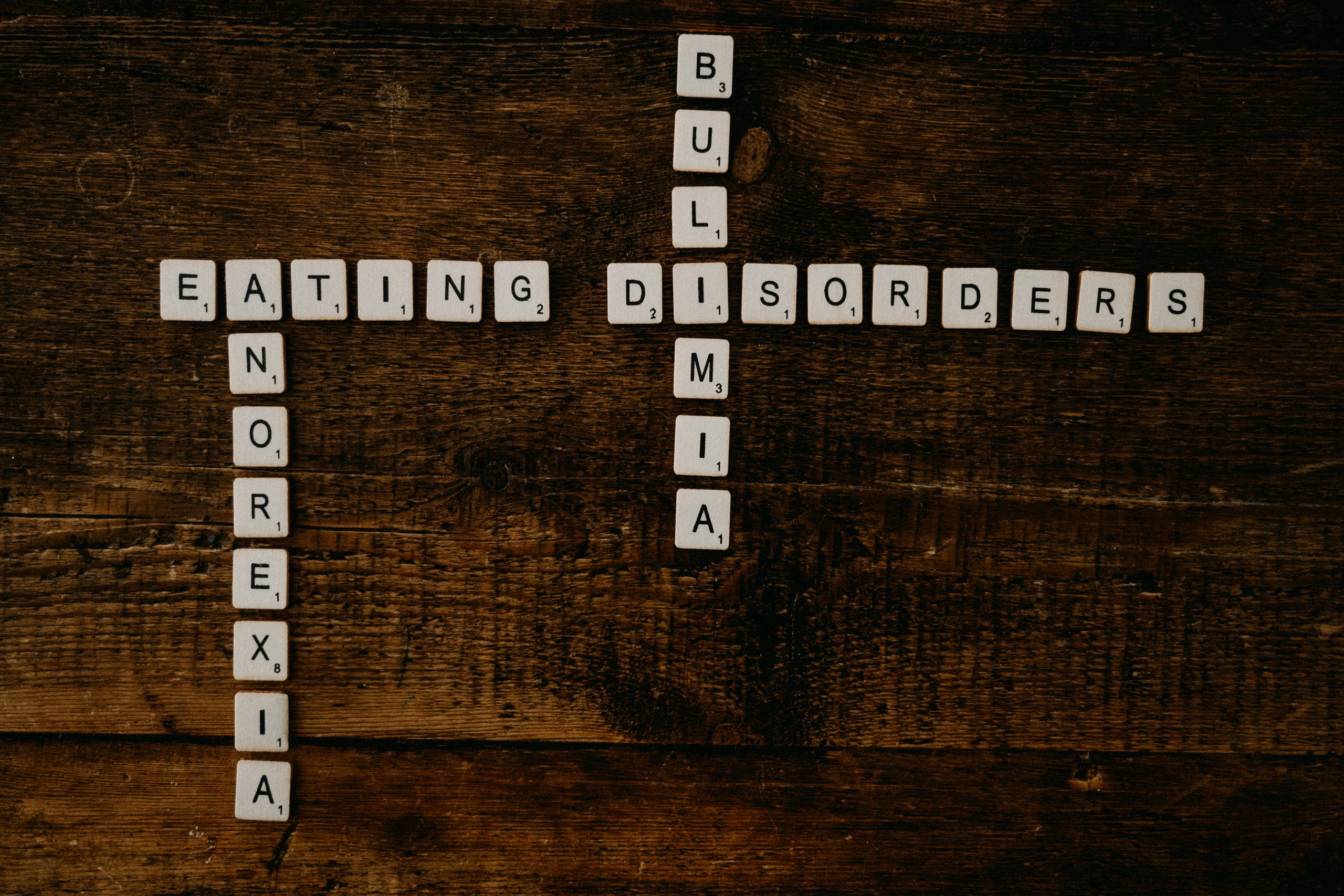What is an eating disorder? An eating disorder is a mental illness where long-term or short-term eating patterns impact an individual’s way of living. Eating disorders are, by definition, physically, psychologically, or socially harmful and unhealthy. This post is going to overview the most common types of eating disorders and provide you with resources to find out more.
Disclaimer: this information is based on the DSM-5 and some language may be potentially triggering. The DSM-5 is the diagnostic and statistical manual of mental disorders in its 5th edition and is considered the standard for classification and diagnosis for mental disorders.
Bulimia Nervosa (BN) is categorised as experiencing recurrent episodes of binge eating for three months followed by compensatory behaviour that is utilised “to prevent gaining weight” from the binge, this can include excessive exercise, fasting, misusing laxatives or other medications and self-induced vomiting. Interestingly most compensatory behaviour plays a significant role in maintaining the binge eating and has limited effectiveness in losing weight.
Anorexia Nervosa (AN) involves the restriction of food and liquid intake required for physical functioning and wellness. It is characterised by an intense fear of becoming ‘fat’ or gaining weight and as a result perception of body weight or shape is disturbed. Even though DSM-5 specifies (AN) is for people with low body weight, this is a historical inclusion as there is now increased recognition that AN can affect anyone of any size (someone is currently diagnosed as Atypical AN if not deemed to be low body weight).
Binge-Eating Disorder (BED) is when there are recurring episodes of eating a large amount of food within a period of time (2 hours normally) and losing a sense of control during an episode. People with BED experience binge episodes as rapid, uncomfortable, embarrassing and can occur with a feeling of disgust or not being hungry. These episodes occur at least once a week for three months and often this leave the individual in distress. This differs from BN, as people with BED do not typically engage in compensatory behaviour associated.
PICA is where individuals consume substances that are not food for at least a month at a level severe enough to warrant clinical support. What is considered a non-food must be culturally and developmentally (e.g. infant mouthing) relevant and is considered minimally nutritional that are inappropriate such as chalk, paint, wool, string, pebbles, clay etc. Eating non-foods can also be included with other mental disorders that have been ruled out before a diagnosis can be made.
Avoidant/ Restrictive Food Intake Disorder (ARFID) is often considered to be extreme picky eating where the food restriction is clinically significant. Generally ARFID is maintained by one of three characteristics: lack of interest in eating; not wanting to eat a type of food for sensory characteristics; or fear of negative outcome. This eating disturbance cannot be culturally explained, explained by a lack of food and cannot occur concurrent with a diagnosis of another eating disorder or be explained by another medical condition.
Other Specified Feeding or Eating Disorder (OSFED) is a disorder that may present characteristics but not the full amount of symptoms for a complete diagnosis- however it is still distressful and clinically significant. This can include low frequency BN and BED, purging disorder (purging without binging initially) and night eating syndrome.
Disordered Eating are behaviours and habits that are distressing and unhealthy and can serve as pathways to developing an eating disorder. This includes restrictive eating, skipping meals otherwise normally consumed and compulsive eating.
If a family or friend is believed to be experiencing an eating disorder, please contact either us or their general practitioner. BodyMatters provides individual and family-based therapy. Also, there are a number of other services and resources such as Eating Disorders Families Australia and Butterfly Foundation.
The Butterfly Foundation: 1800 ED HOPE (1800 33 4673)
Picture: https://unsplash.com/photos/DDyMG1LZaHoutm_source=unsplash&utm_medium=referral&utm_content=creditShareLink
Sources used for article:
DSM-5: Diagnostic and Statistical Manual of Mental Disorders (5th edition), APA, 2013

